What Is Camber in Road?
Important Point
It’s mostly found in the highways the median part of the road surface is elevated with regards to the edges. This slope from the diagonal direction is known as the Camber.
The purpose of the camber is to drain out the rainwater from the road surface around the edges.
Camber is the slope provided to the road surface at the transverse direction to drain off the rainwater out of the road surface. It is also known as the cross slope of the road.
The rate of camber is normally indicated by 1 : n ( 1 in n ) (1 vertical to n horizontal) or in proportions as n % (for instance, 1 in 50 or 2 %).
The design values of cambers are primarily based on the type of pavement and also on the average amount of rainfall in the area. Steep cambers are useful for eliminating surface water.
But they’re not recommended since they will wear down the surface. Normally, cambers of slope 2 to 3% are arranged.
On straight sections of roads, they’re shoulders with higher cross fall relating to that of the carriageway by 0.5%.
Also, read: What Is Grouting | Type of Grouting | Advantage of Grouting
Types of Camber
- Composite camber.
- Sloped or Straight camber.
- Two straight line camber.
- Barrel camber.
#1. Composite Camber.
Composite camber might be composed of partly parabola and partly straight line or two straight lines having different slopes.
Generally, the central part of the road is made parabolic and provided with straight slopes near edges. This helps to decrease in intensity of pressure by increasing the contact area of the wheel.
#2. Straight Camber or Sloped Camber
This type of camber is provided by meeting two straight surfaces in the crown. Crown is the central and top most point in the surface of the road.
The edge shape produces inconvenience to the traffic, so it isn’t used in general.
#3. Two Straight Line Camber.
It consists of both straight lines steeper near the edges and flatters near the crown. This type of camber is considered to be the best for Indian roads.
#4. Barrel Camber.
It consists of a continuous curve, either parabolic or elliptical. This type of camber is preferred for roads used by fast-moving vehicles.
Also, read: Estimation for Building Works | Centre Line Method | Long and Short Wall or Out and in to in a method
Why Is Camber Provided In Road?
- To protect the road by preventing the entry of surface water to the subgrade soil through the pavement.
- To prevent the entry of water to the bituminous pavement layers.
- To remove the rainwater from the pavement surface as quickly as possible and to allow the pavement to get dry soon after the rain.
Advantages of Camber in Road
This prevents rainwater to accumulate at local shrinkages or depressions and forming water pools around the road surface that are disagreeable to the public as well as to the road structure.
Camber provides quick drainage of rainwater and so saves the foundation course of this road structure from weakening from the percolation of rainwater to it through the road surface.
Also, read: Carbon Steel vs. Stainless Steel | What Is Carbon Steel | What Is Stainless Steel
Method of Providing Camber in Road
Normally, the camber is provided on the straight roads by raising the center of the carriageway with respect to these edges, forming a crown or highest point on the center-line.
At horizontal curves with superelevation, the surface drainage is effected by raising the outer edge of the pavement with respect to the inner edge while providing this desired superelevation.
The rate of camber or cross slope is generally designed by 1 in n, which means the transverse slope is at ratio 1 vertical to”n” horizontal. Camber can be expressed in percentage. If the camber is n%, the cross slope is n in 100.
Recommended Values of Camber in Road For Different Types of Road surface by IRC:
| Sr. No. | Type of Road Surface | Range of Camber in Areas of | |
| Low Rainfall | Heavy Rainfall | ||
| 1 | Cement concrete and thick bituminous surface | 1 in 60 or 1.7% | 1 in 50 or 2.0% |
| 2 | Thin bituminous surface | 1 in 50 or 2.0% | 1 in 40 or 2.5% |
| 3 | Water bound macadam and gravel pavement | 1 in 40 or 2.5% | 1 in 33 or 3.0% |
| 4 | Earth Road | 1 in 33 or 3.0% | 1 in 25 or 4.0% |
A drawback of Providing Excessive Road Camber Height
- It reduces the road width as everyone will try to move in the middle of the road.
- The road will wear and tear on the edges.
- The passengers feel they unbalance and discomfort during the journey.
- Chances of accidents will increase.
Camber In Highway
- Camber: Camber is the transverse slope provided to the road surface for the drainage of the rainwater for the better performance of the road. Camber can be written as 1 in n or x%.
- Parabolic Camber : Parabolic camber is provided by providing a parabolic shape to the surface of the road.
Types of Camber
- Traditional Camber: This is known as traditional camber because once upon a time pretty much all snowboards were made with this profile.
- Continuous Rocker/Reverse Camber: This has many names – rocker, reverse camber, anti camber, banana and continuous rocker come to mind. But essentially it is the opposite of traditional camber.
- Flat Camber: Just like it sounds this profile has no camber or rocker – it’s flat between the contact points.
- Hybrid Profiles: Like the name suggests, hybrid profiles are a mix of camber, flat and rocker. There are heaps of different combinations of this employed by snowboard manufacturers.
Camber in Road
Camber is the cross slope given in the pavement in a transverse direction to drain out the rainwater from the road’s surface.
Camber in the Road Is Provided for
The main objective of providing a camber will be to drain off rainwater from the road surface, as quickly as possible. As rest options are the ultimate result of the quick drainage of water from the pavement.
What Is Camber in Road?
Camber is a slope provided on the road surface in the transverse direction to drain out the rain water from surface to avoid skid of vehicles and pavement damages. Camber is again one of the most important element of a road pavement which have lot’s of advantages for longer durability of road surface.
Barrel Camber
It consists of a continuous curve either elliptical or parabolic. It is provided in the middle half. It provides a flat road surface at the middle and steeper towards the edges. On account of steeper edges, this type of camber provides better drainage property.
Cambering Meaning
Camber is the slope provided to the road surface in the transverse direction to drain off the rainwater from the road surface. It is also known as the cross slope of the road.
What Is Camber in Highway Engineering?
In highway engineering, camber refers to the slope or curvature provided to the surface of a road or pavement. It is the slight convex shape given to the road surface, which is higher at the centerline and slopes downward towards the edges. The purpose of camber is to ensure proper drainage of water from the road surface.
Camber in Transportation Engineering
Camber in transportation engineering refers to the intentional slope or curvature applied to road surfaces, railroad tracks, bicycle paths, and airport runways to facilitate drainage and improve safety. It involves creating a slight convex shape, with the centerline higher than the edges, to allow water to flow off the surface, reducing the risk of hydroplaning and improving traction.
What Is a Camber on a Road?
Cross slope, cross fall or camber is a geometric feature of pavement surfaces: the transverse slope with respect to the horizon. It is a very important safety factor. Cross slope is provided to provide a drainage gradient so that water will run off the surface to a drainage system such as a street gutter or ditch.
Types of Camber in Road
Types of Camber in Road
- Straight Line Camber/ Sloped Camber. Straight Line Camber consists of two slopes originating from the edges and joining at the center of the carriageway.
- Two Straight Line Camber.
- Parabolic Camber (Barrel Camber).
- Composite Camber.
Road Camber Percentage
Generally, cambers of slope 2 to 3% are provided. On straight sections of roads, shoulders are provided with higher cross fall than that of the carriageway by 0.5%.
Cambered Surface
Roads are not flat but are designed and constructed to assist in the drainage of water. This is known as a camber. The surface is angled to stop rain water and snow melt gathering into puddles.
Why Camber Is Provided?
Camber is provided in transportation engineering to facilitate drainage, improve safety by reducing the risk of hydroplaning, enhance driving comfort, and protect the longevity of the infrastructure.
Cross Slope of Road
Camber/Cant: It is the cross slope provided to raise the middle of the road surface in the transverse direction to drain off rainwater from the road surface. The objectives of providing camber are as follows: Surface protection especially for gravel and bituminous roads and hence making it more durable.
Purpose of Camber
Usually, you can find this angle in almost every car. The main purpose of camber is to prevent the top of the wheels from tilting inwards too much which is because of the load or play in the suspension ball-joints & wheel bearing.
Which Camber Is Provided for Earth Roads?
For earth roads, a technique called “crowning” is typically used instead of providing camber. Crowning involves shaping the road surface into a slight convex shape along its width, with the highest point at the centerline and sloping downward towards the edges. This design allows water to drain off the road surface more effectively.
Like this post? Share it with your friends!
Suggested Read –
- Street Gutter
- Road Horizontal
- Difference Between Carpet Area and Built-up Area
- What Is a Field Dry Density Test | Different Type of Field Density Tests
- What Is Plaster | Plaster Ratio | History of Plastering | Requirements of Good Plaster
- What Is Glass Fiber Reinforced Gypsum | Applications of GFRG | Disadvantages of The GFRG Panel
- What Is Structural Settlement | Causes For Structural Settlement | What Is Soil Settlement & Foundation Structural Settlement
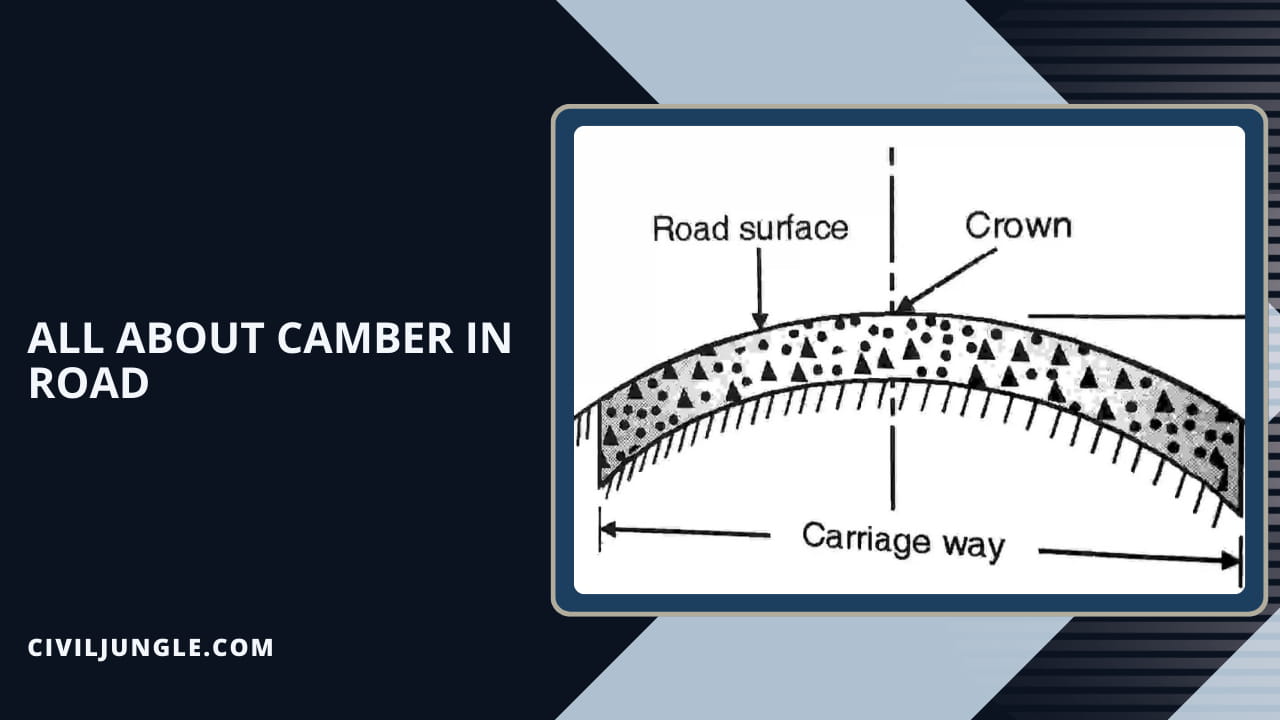
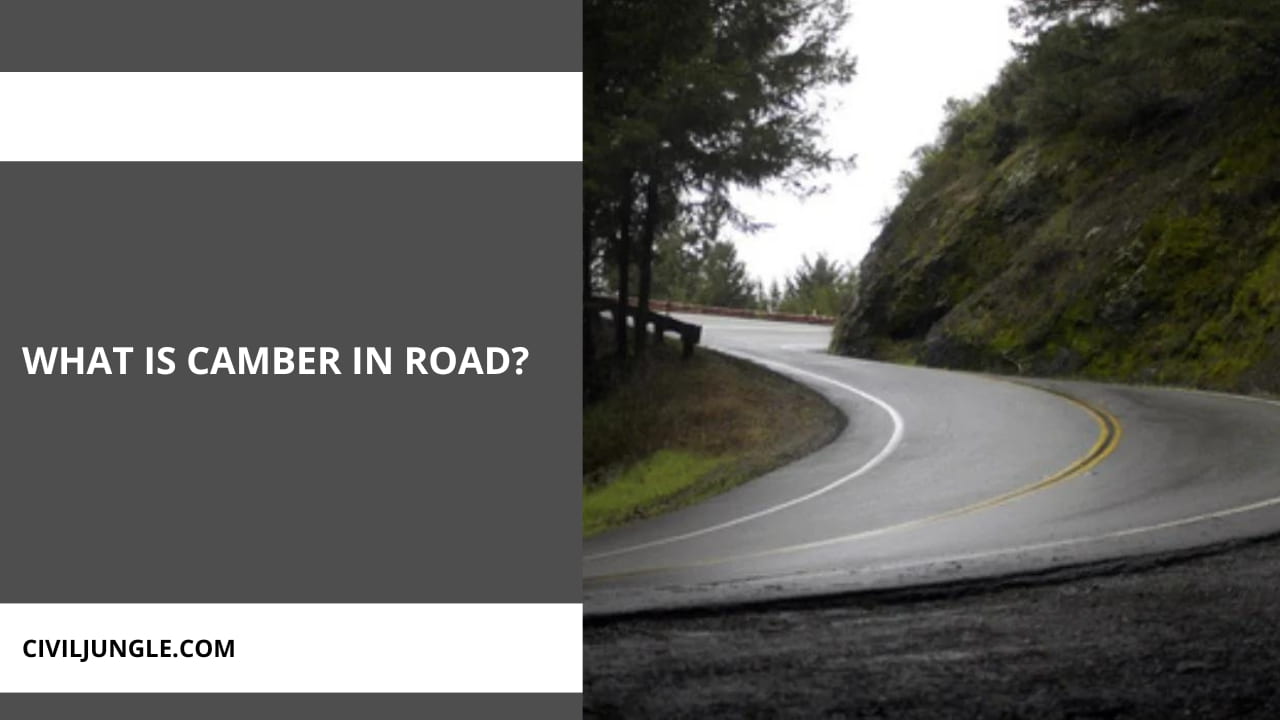
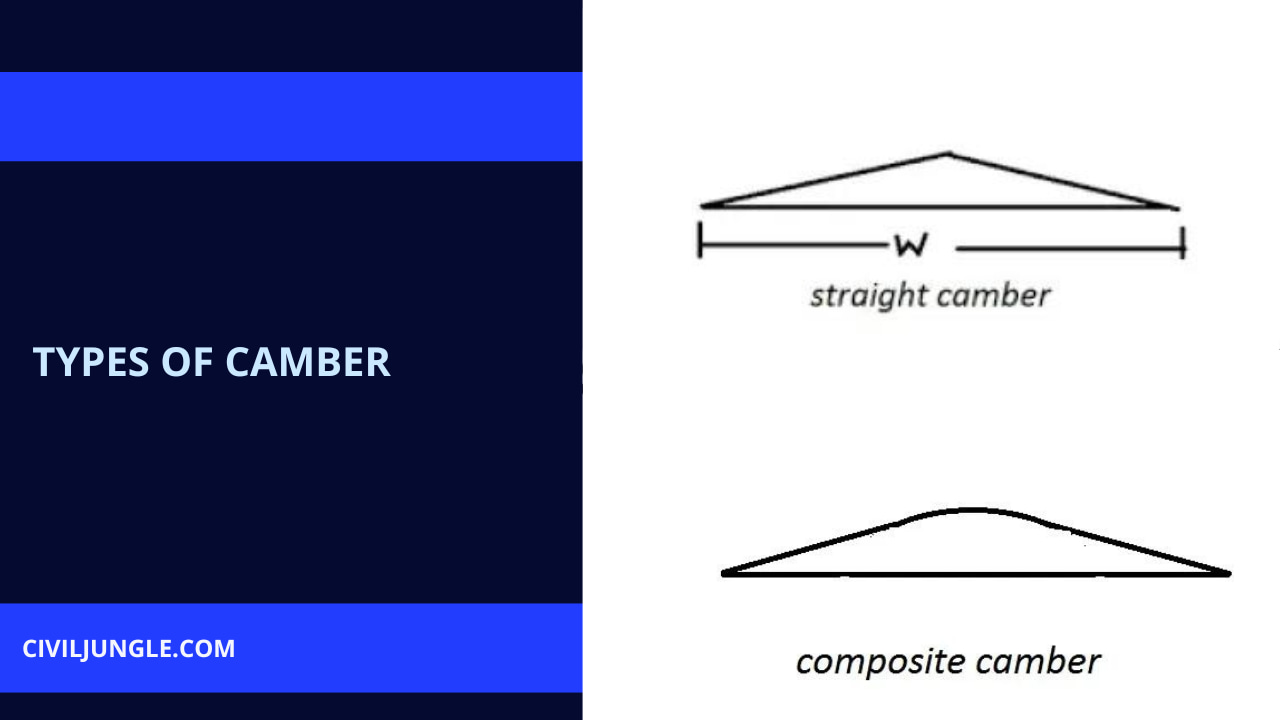
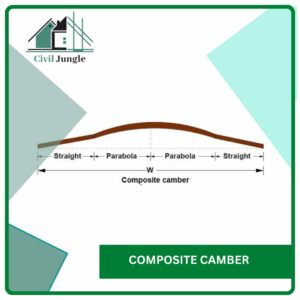
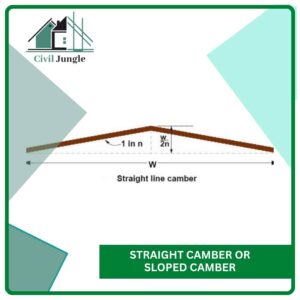
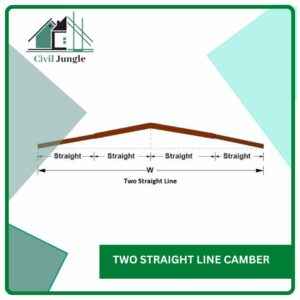
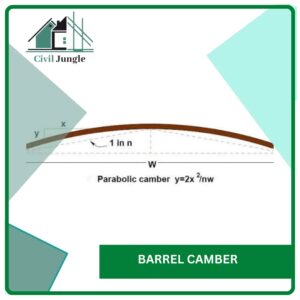



How to measure Camber of road on site?